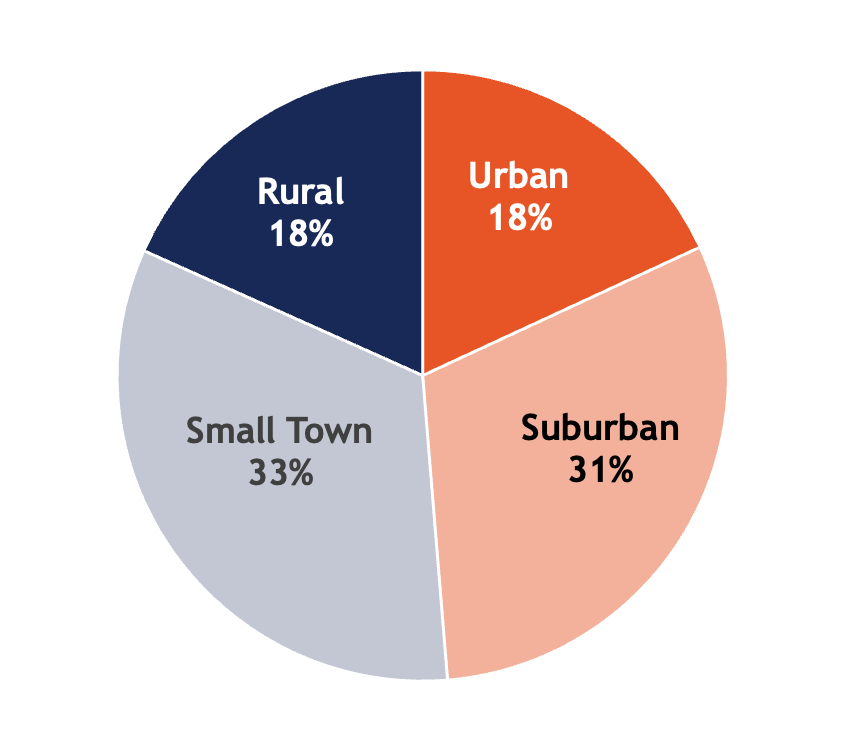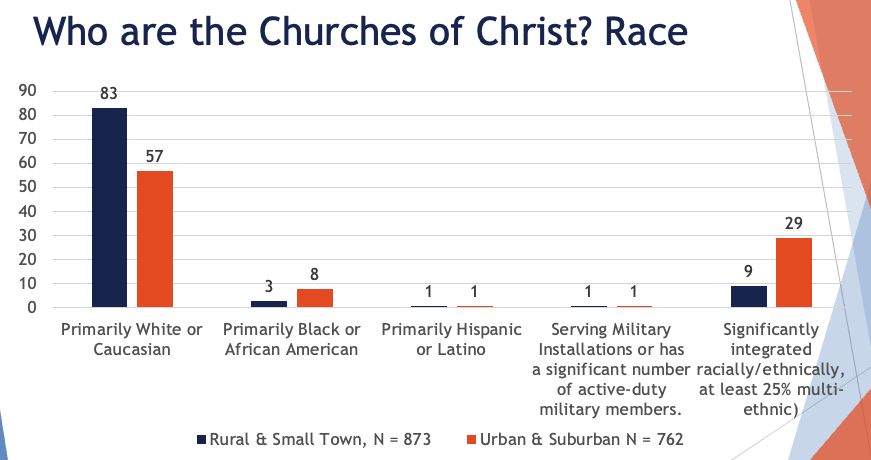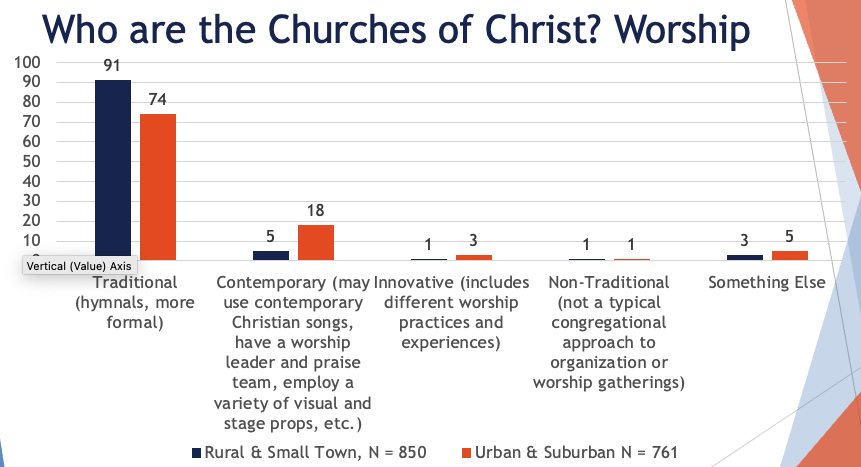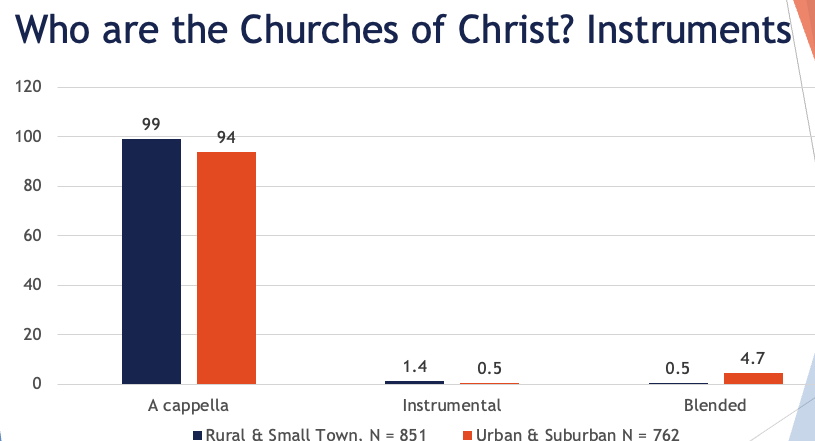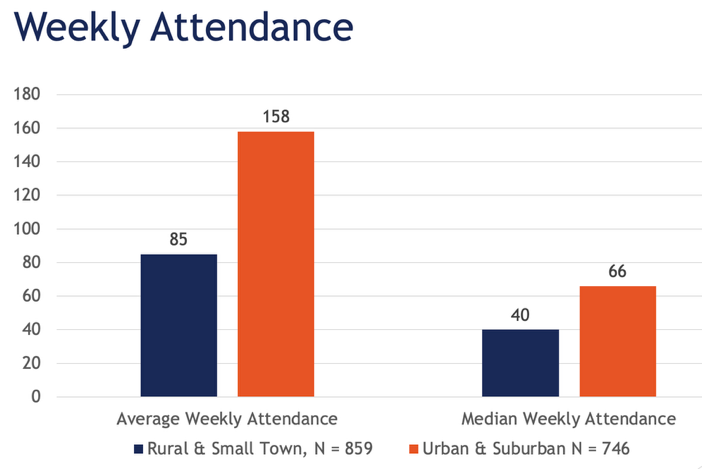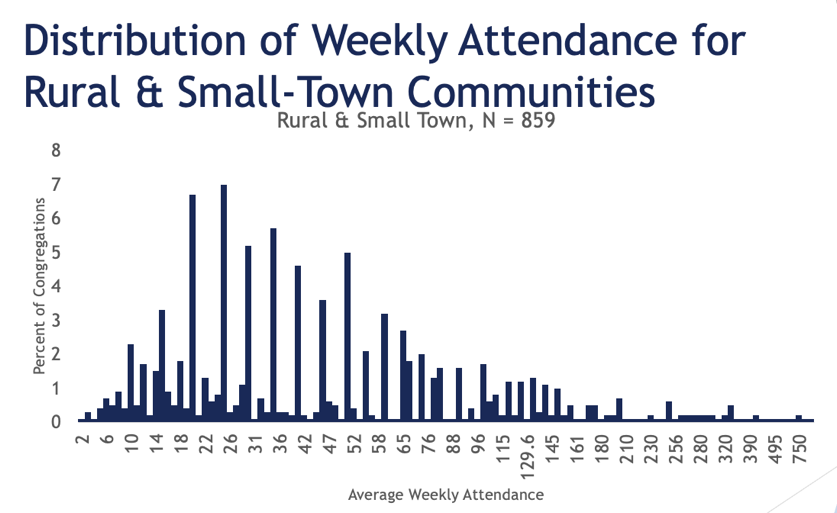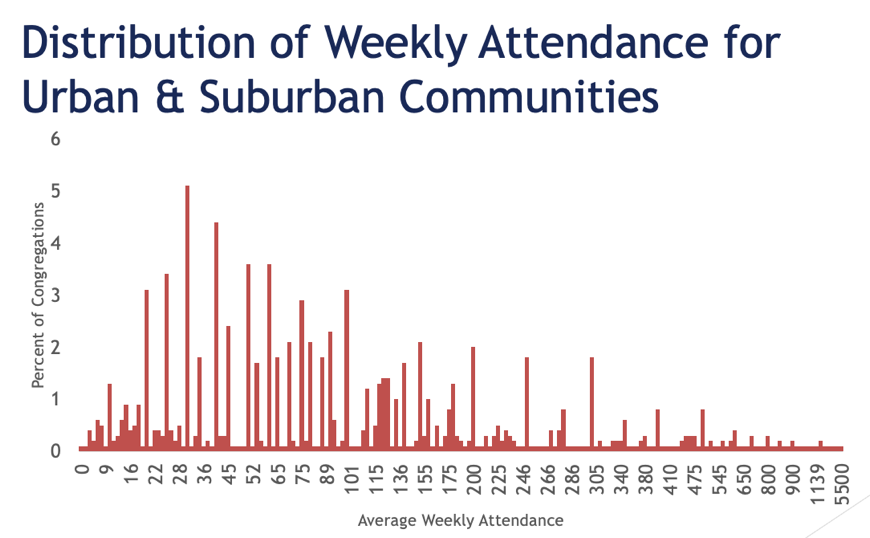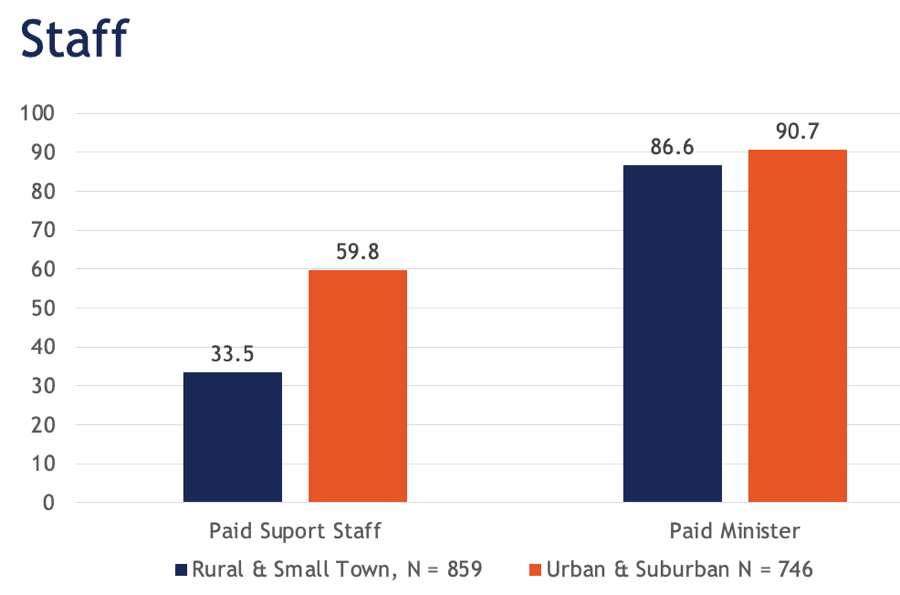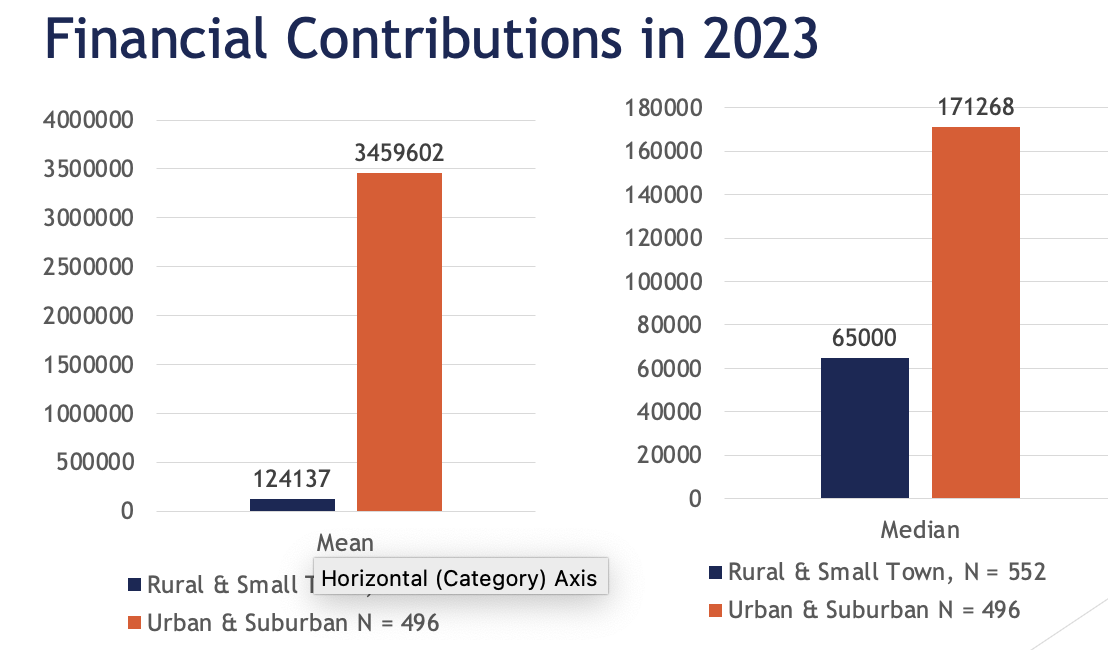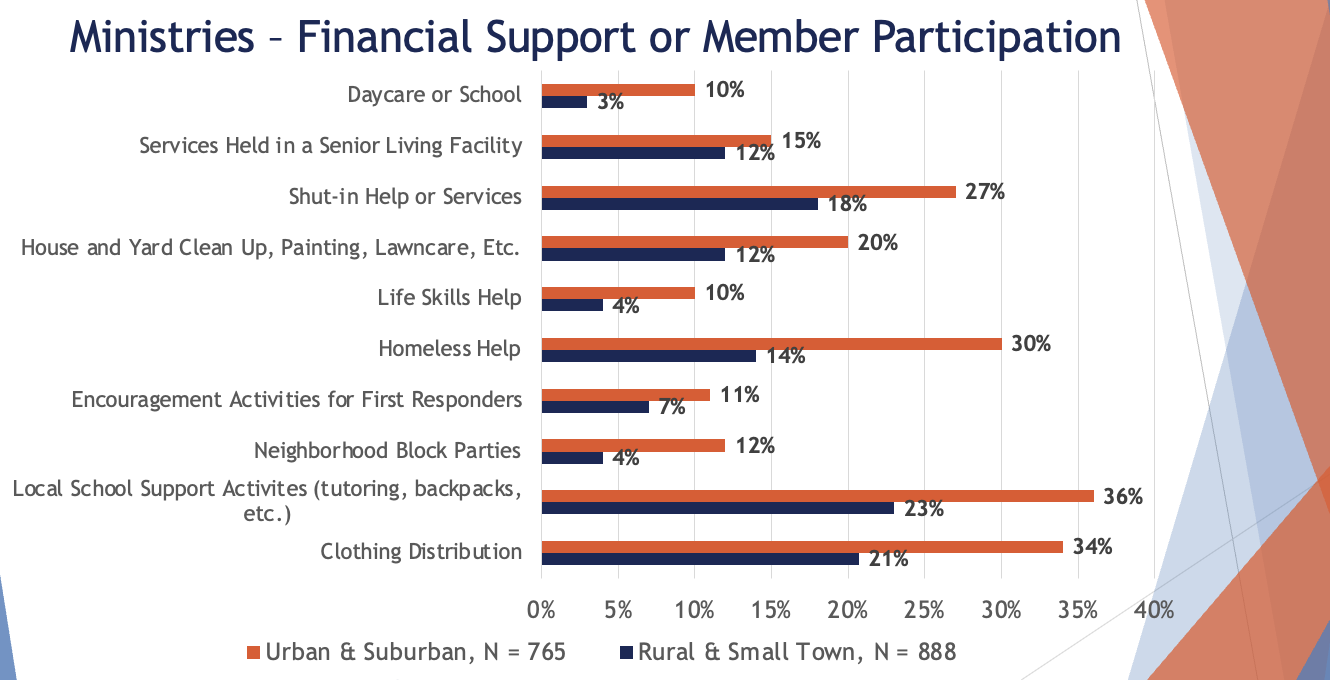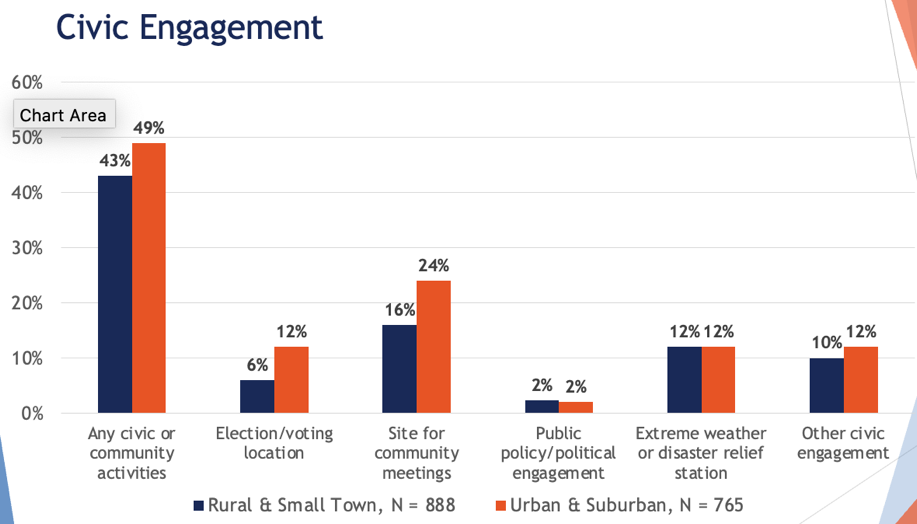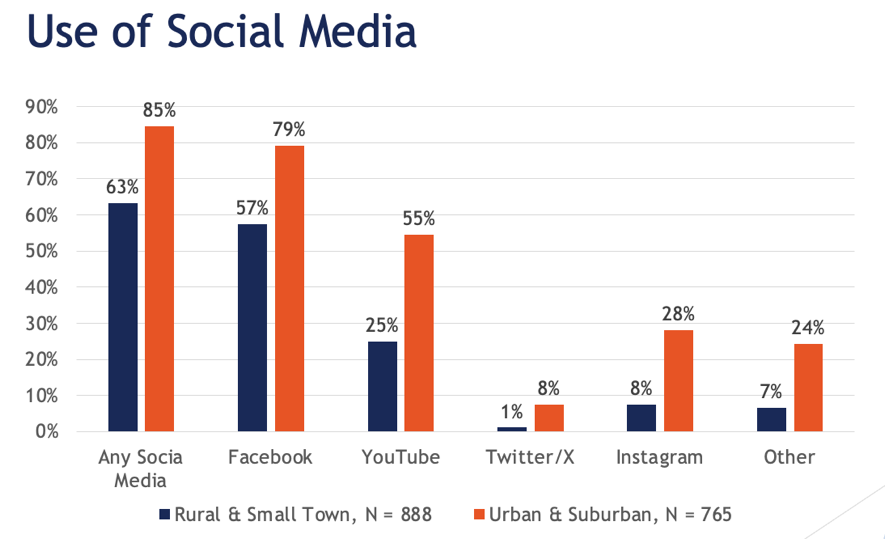Are Rural and Small-Town Churches Really That Different? Findings from the Church Research Council National Survey of Churches of Christ
Abstract
While churches, especially in rural communities, often serve as centers of civic life, there is very little recent data on these congregations, particularly those within the Churches of Christ tradition. This study fills the knowledge gap by providing an overview of the demographic, structural, and ministry-related characteristics of Churches of Christ across the United States, with a specific focus on differences between rural and small-town areas and those in urban and suburban settings.
Using data from a 2024 Church Research Council (CRC) survey—the largest ever conducted on Churches of Christ—this report analyzed responses from 2,029 congregations across 47 states. The sample was nearly evenly split between participants from rural and small-town areas and those from urban and suburban communities. The analysis revealed that notable structural and cultural differences emerged between the two groups.
Churches, especially those in rural communities, often serve as the center of civic life. Understanding rural and small-town churches is particularly helpful as we seek to comprehend religion in America and to encourage people to join the church. What we do know is that we don't know much; very little data has been collected on rural and small-town churches in general, let alone Churches of Christ. In fact, it has been seven years since the last large-scale data collection on Churches of Christ, and that data was primarily used to create a database of Churches of Christ in the US. It didn't include many questions about the churches and their roles in the community.
The data I am researching in this report comes from the Church Research Council (CRC). In 2024, the CRC aimed to conduct the largest survey of Churches of Christ ever done. Using data from the 2018 Churches of Christ in the US database, created by 21st Century Christian Publishing, they sent emails, physical mailers, follow-up postcards, and in-person visits to contact the 11,914 Churches of Christ listed in the 2018 directory. After removing incorrect addresses and churches known to have closed, the list of churches was reduced to 10,682. To boost participation, the CRC assembled a team of church leaders from each of the primary streams of Churches of Christ: mainstream, non-institutional, church plant, non-class, and one cup. These leaders were asked to reach out within their stream to encourage participation. Additionally, ambassadors from all regions of the United States were recruited to contact churches in their states, promoting involvement in the survey.
The data collection period for this study went from late July 2024 through March 2025. We will begin with a general overview of the locations of our churches. When we look at the pie chart below, of the 2,029 congregations that participated in the survey, they are pretty evenly divided between rural, small-town (RST), and urban or suburban (US). 51% of our sample comes from RST, while 49% are from US areas.
The distribution of Churches of Christ across the United States is shown in the map below. In total, we received responses from 47 states, with Texas and Tennessee having the highest number of churches.
So, who are we as the Churches of Christ? Let's start by examining the known streams of Churches of Christ. Traditionally, we divide them into six categories: mainstream, non-institutional or congregational, mutual edification, one cup (both fermented and unfermented juice), non-class with a located preacher, and non-class without a located preacher. When examining these congregations, we find that in rural and small-town communities, there are slightly more non-institutional or congregational churches than in urban and suburban areas. However, about 83% still identify with the mainstream. An important consideration is then: what are the differences among those mainstream congregations? How are they different from one another? How are they unique?
Within Churches of Christ, like all religious traditions in the United States, there are divisions based on race and ethnicity. Looking at our primarily white or Caucasian churches, we see that 83% of our rural and small-town congregations identify as such. In comparison, only 57% of our urban and suburban congregations do the same. For our primarily Black or African-American, historically Black Churches of Christ, 3% of the rural and small-town congregations identify as mainly Black or African-American, whereas 8% of congregations in urban or suburban areas do. Another notable difference is that 9% of rural and small-town churches report being highly racially and ethnically integrated, compared to 29% of urban and suburban churches.
Historically, one of the defining features of Churches of Christ has been the style of worship. We asked about the worship style and found that our rural and small-town congregations are more likely to identify as traditional, using hymnals and being more formal in their gatherings. In contrast, our urban and suburban churches are more likely to describe themselves as contemporary, often using contemporary Christian songs, featuring a worship leader, a praise team, or employing various visual and stage props. Regarding the use of instruments, historically, Churches of Christ have been known for their a cappella tradition and lack of instruments. However, more congregations are embracing the use of instruments. While 99% of rural and small-town congregations still identify as a cappella, 94% of urban and suburban churches also report being a cappella. About 4.7% of urban and suburban churches report having a blended worship style—they might offer one service that is traditional a cappella and another that incorporates instruments, or they may use instruments occasionally but not every time. Additionally, about half a percent of urban and suburban churches are fully instrumental, and about 1.4% of rural and small-town congregations are entirely instrumental.
In considering church growth and the decline of churches. It's essential to consider weekly attendance — how many people attend regularly. In our congregations, there is a significant difference between rural and small-town churches and those in urban and suburban areas. Let's look at the median, which is the midpoint where half of the congregations are above and half are below. For rural and small-town congregations, the median attendance is 40 people, meaning half of these churches have an average of 40 or fewer attendees each week, while the other half have more. For urban and suburban churches, the median rises to 66. Not all congregations are small; we still have large churches in rural and small-town areas. The average attendance in rural and small-town communities ranges from 2 people to 1,000 people. The range for urban and suburban areas is from 4 to 5,500.
Another difference between our rural and small-town congregations and our urban and suburban congregations is the presence of paid support staff. We find that most of our churches have some form of paid Minister, with the type of position varying between full-time and part-time. Specifically, 86.6% of churches in rural areas and small towns have a paid Minister, while 90.7% of churches in urban and suburban areas do. When looking at additional paid support staff, the gap between these groups widens. About a third of our small-town churches have paid support staff, which can include administrative assistants, janitorial staff, or bookkeepers—all falling under the umbrella of paid support personnel. In contrast, nearly 60% of churches in urban and suburban locations have paid support staff.
Another significant difference we see is in financial contributions, which can be influenced by church size. The larger the congregation, the higher the contributions tend to be. We find that the median contributions for rural and small-town churches are approximately $65,000 per year, while for our urban and suburban churches, it is $171,268 per year—more than double the budget for rural and small-town congregations.
With these budgets, we can examine the types of Ministries supported by these congregations. These may include daycares, schools, services in senior living facilities, assistance programs, yard cleanups, painting, lawn care, life skills, help for people experiencing homelessness, activities for First Responders, neighborhood block parties, support for local schools, such as tutoring and backpack drives, and clothing distributions. Our survey focused on these types of Ministries. Urban and suburban congregations tend to participate in all of these more than rural and small-town congregations. This raises the question: Is this due to church size, or are there other factors in rural and small-town communities leading to fewer such Ministries? Could the survey itself be biased towards Ministries that are more prevalent in urban and suburban areas? These questions are under consideration, and we plan to explore them further through our upcoming Empower and Equip survey, which will be distributed to rural and small-town congregations in early November.
In addition to the ministries mentioned above, we also inquired about civic engagement activities. We are exploring various community activities, such as hosting elections or serving as voting locations, hosting community meetings, engaging in public policy or political initiatives, providing emergency weather or disaster relief, or participating in other forms of civic engagement. For nearly all these activities, urban and suburban congregations are more likely to be involved. We need to ask ourselves whether this is simply due to the size and financial resources of the congregation, or if there is something else influencing rural and small-town communities.
We also examined the online presence of churches following the COVID-19 pandemic of 2020. Increasingly, churches began to rely on electronic forms of communication, including email and social media. Many congregations that transitioned to online services continued them even after the pandemic, allowing people who couldn't attend in person to participate and be part of the congregation's life. When we examine social media specifically, we find that 85% of our urban and suburban churches use some form of social media compared to 63% of our rural and small-town congregations. That's still a significant number of churches using social media, though not as many types. Facebook is the most common platform, followed by YouTube, Instagram, and other platforms, with Twitter being used less frequently by congregations.
So, what does this mean? These findings allow us to move beyond rural and small-town stereotypes, providing us with real information on the strengths and weaknesses of rural and small-town Churches of Christ. The findings from this study will inform programming developed by the Siburt Institute for Church Ministry, specifically designed for rural and small-town congregations as part of the Empower and Equip program. Future research planned for this fall includes a survey of all ministers, both paid and unpaid, in Churches of Christ to examine their beliefs and levels of burnout and stress. Additionally, a survey has been designed with rural and small-town congregations in mind to help understand common themes of thriving and struggling churches.

